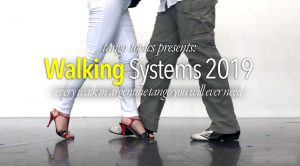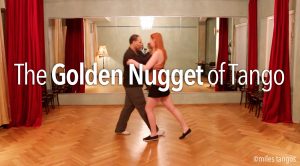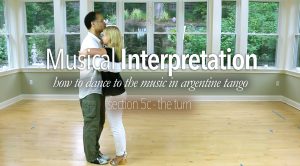The 'Basics' of Tango
Everyone thinks that they don’t need their BASICS, or that they don’t need to revisit their foundation. Wrong. You do. Constantly. Unless you teach, and even then you do – even more so, you must revisit your foundation to help you to fix the errors, and yes you have them, that have crept in that you are unaware of. On this site there are over 800 videos and articles (not including all the other stuff) on Tango Topics for you to watch and learn from. It’s not just the videos, but the articles that contain the most of what you need to know to elevate your dance. We’re not trying to sell you videos here, but instead to inform and engage you to educate yourself wherever possible.

Beginning Tango – The First Lesson
Beginner Tango is the starting point for all of us. Our first steps, our first movement to tango music. This article quite literally walks the reader through those first few motions and ideas of what tango is and isn’t.

Lead Technique 2019
Leading. Often the first thing we see when looking at Argentine Tango is the Tango Lead. It’s that sharp, clear, clean visual that strikes us almost immediately. We see the the visual of someone leading, and it’s this confusion, appreciation, amusement, bewilderment and just down right awe (in some cases) of a ‘wow’.

Follower Technique 2019
What is ‘Follower Technique‘? In its simplest form, it is a series of skills that when put together create a ‘dancing platform’ for the Follower. This is a platform that the Follower builds into their body through painstaking, detailed, carefully crafted motions that consists of…

Walking Systems
What are Walking Systems ? These are 18 different ways that we can walk in Argentine Tango. Not the how-we-walk, or the mechanics of how we walk but the multiple methods to the ways in which we might want to walk. The ideas comprise a composite or overall vantage point that no matter what situation one is in, there is a walking solution for that situation.

The Golden Nugget
The Golden Nugget is a Tango Topics construct, and is quite possibly the one tango pattern that you will ever need to know to dance tango. Put another way it’s a piece of Tango vocabulary (a pattern) that works in all 3 dances, is highly extensible (meaning it can be modified endlessly), extremely adornable (meaning you can adorn it), and is insanely musical!

Musical Interpretation – Parts 1 & 2
What is ‘Musical Interpretation’ ? Musical Interpretation is a term that means brings together to very different ideas. First, ’Musical’, is that either role hears the music in a very specific way so that they can thereby convey the meaning of a piece of music via movements that represent that music. With the ultimate goal that if anyone watches a couple’s dance, sees the music in the dance.

Musical Interpretation – Parts 3 & 4
Today’s Tango Topic refines the process of Musical Interpretation, by showing you how to use Musical Interpretation with two important tools: Alternation & Symmetry. The end goal here is to create a structured process that allows us to make free choices instead of haphazard choices that don’t necessarily fit the music at all, if ever. However, for most people when they begin this process of Musical Interpretation they are rightfully overwhelmed by the sheer volume of the problem. How do you interpret the music when the topic of Tango Music is so vast ?

Musical Interpretation with Traveling Ochos! 🙂
Musical Interpretation. Another aspect of Musical Interpretation is what happens when you start to apply very specific pieces of Tango Vocabulary to fit with the music. It is through this specificity of the vocabulary choice, and really the granular control of that specificity, not to mention the variation (and the variable control of the variation) that musical interpretation starts to take on its true purpose.

Musical Interpretation with Turns
What is a Musical Turn ? First and foremost it is a ‘Turn’ or rotation that the couple initiates within the line and lane of dance that can exist in one of three places in the music. 1.) The space between the musical pauses (which is what typically occurs). 2.) The actual musical pause itself, this is known as turning ‘On the Pause’. Or 3.) The notes just before or after the musical pause. 🙂
